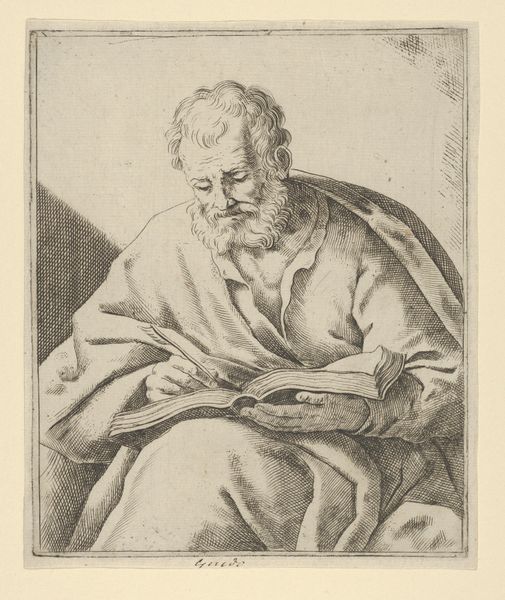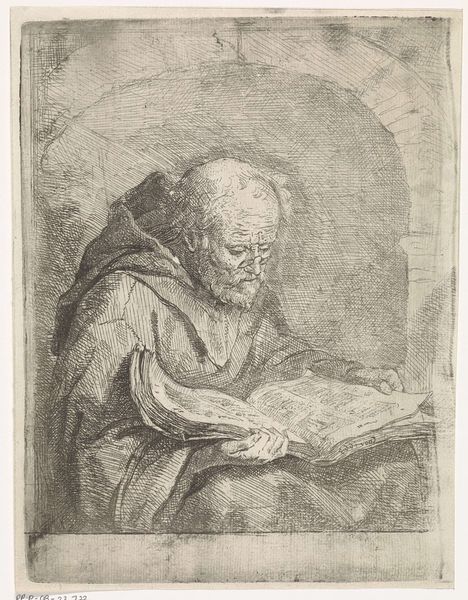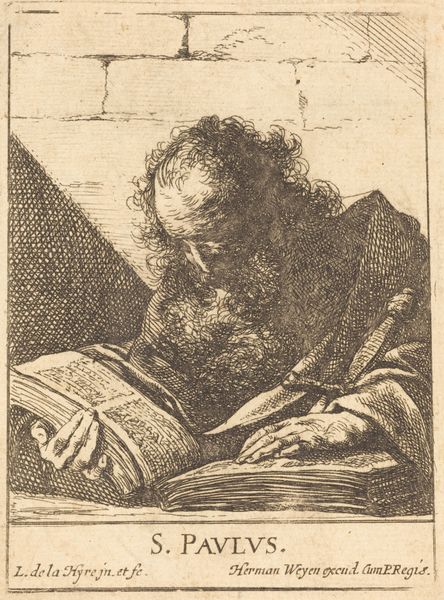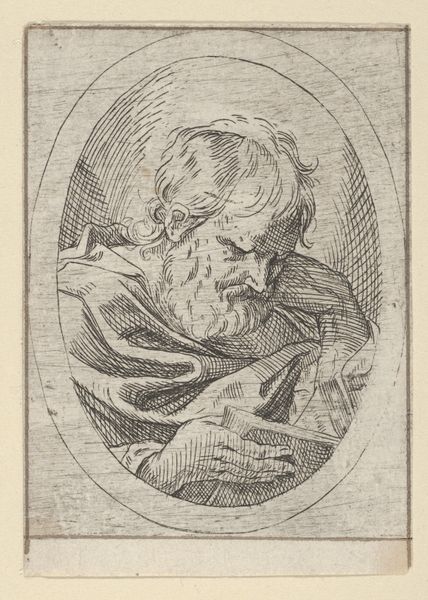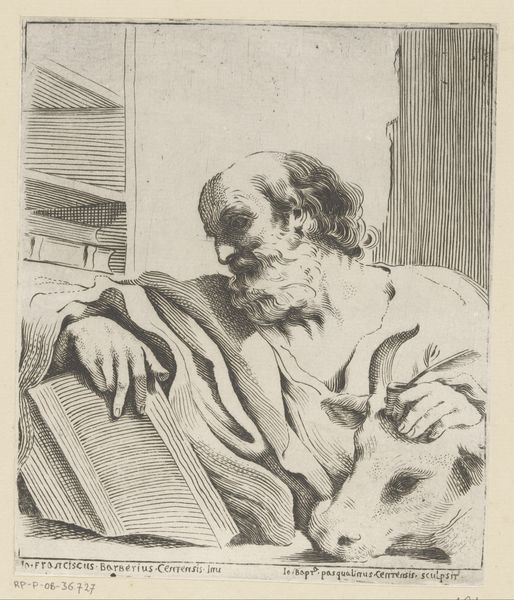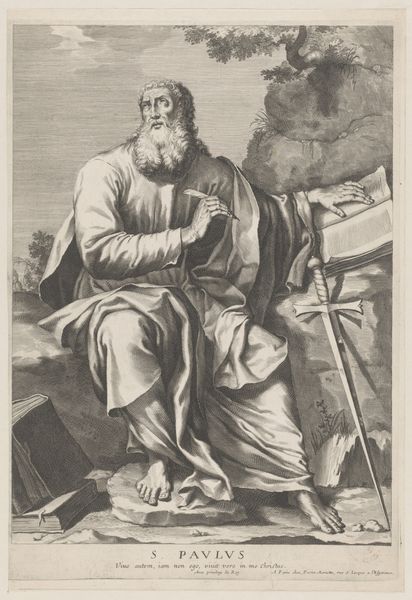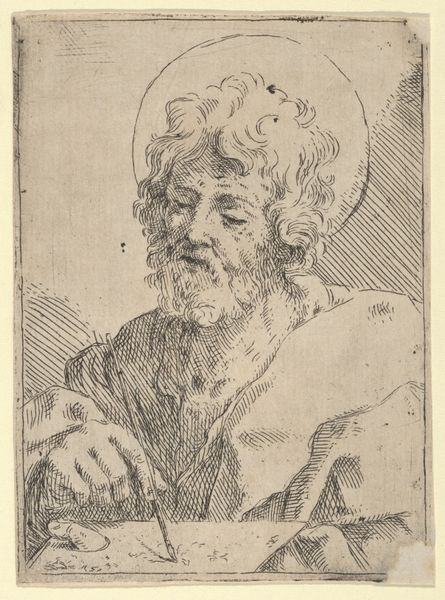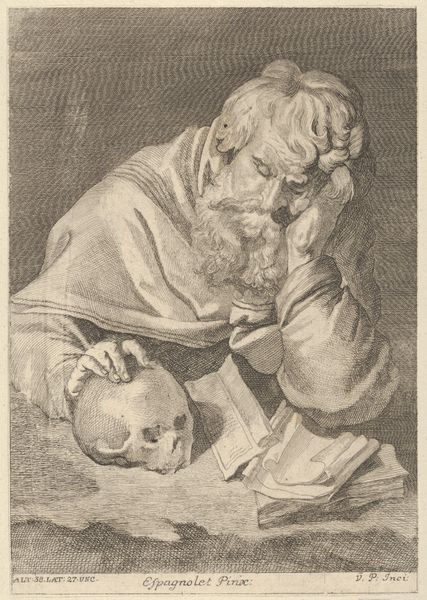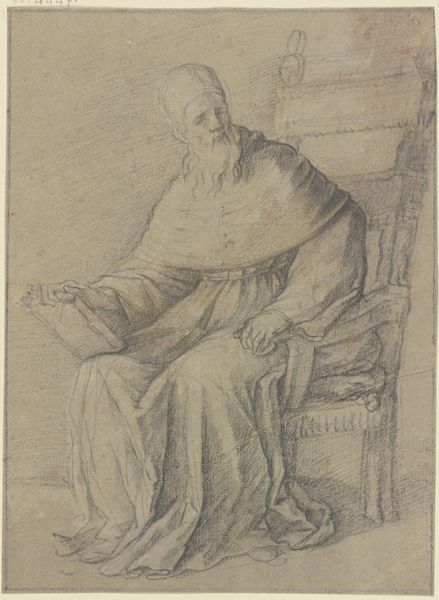
Old man seated and writing in a book, an angel at right looking over his shoulder, after Reni (?) 17th century
0:00
0:00
drawing, print, engraving
#
portrait
#
drawing
#
baroque
# print
#
portrait drawing
#
history-painting
#
engraving
Dimensions: Sheet (Trimmed): 7 11/16 × 6 1/2 in. (19.6 × 16.5 cm)
Copyright: Public Domain
Curator: Here we have a 17th-century engraving, "Old man seated and writing in a book, an angel at right looking over his shoulder, after Reni (?)," currently held in the collection of the Metropolitan Museum of Art. The identity of the engraver remains anonymous. Editor: The overall tonal effect of the piece gives me a certain meditative mood. The limited tonal range emphasizes line, particularly around the drape of the subject’s robe. There's something very humble in the composition; it's almost austere, but with a quiet intensity. Curator: Well, engravings like this served a crucial purpose beyond mere aesthetics. Consider the reproduction process – the artist-engraver skillfully translates the composition onto a copper plate. Prints made from that plate became a readily available medium for disseminating imagery in the pre-photographic age. The means of its creation made the artwork mobile. Editor: You’re right to highlight its original function, and it prompts me to look closely at the visual relationships at play here. The composition balances the solid figure of the seated man against the ethereal angel. The interplay between light and shadow helps to shape a narrative space, almost directing my eye from the act of writing towards divine inspiration. Curator: And consider how the printing process democratized images. Engravings allowed works like those by Guido Reni to be consumed and understood by a much broader public than his original paintings. Workshops employing engravers were integral to artistic production and knowledge transfer. We can even observe the social structure and economics inherent to this kind of studio. Editor: The engraver has successfully created the texture of the paper of the book with nothing but cross-hatched lines! Curator: It shows us not only religious interpretation but a wider access to education during the era. Editor: Examining this piece shows that visual analysis and social contexts can beautifully complement each other! Curator: Indeed. Focusing on the work's materiality helps to reveal the broader mechanisms of artistic production and social communication.
Comments
No comments
Be the first to comment and join the conversation on the ultimate creative platform.
